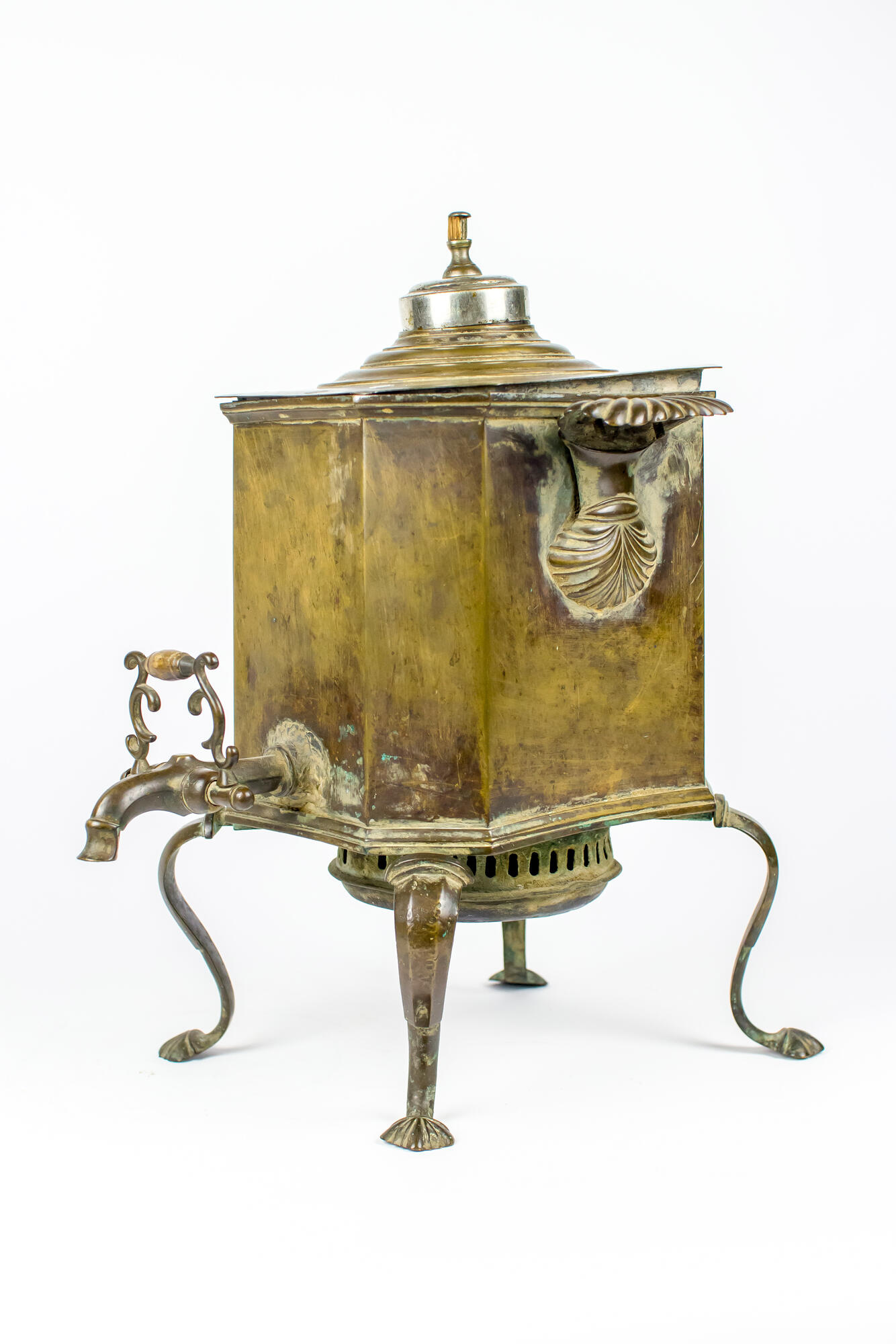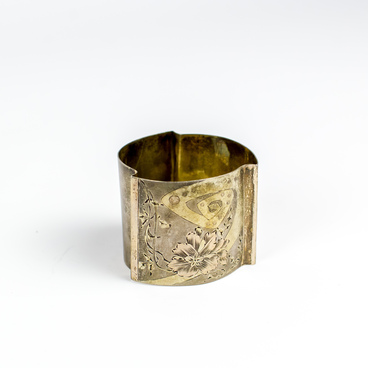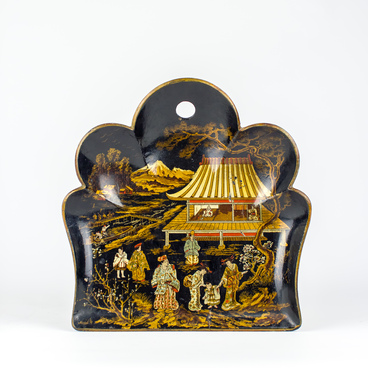Travel samovar with folding legs, handles, and a tap entered the collection of the Tetyushi City History Museum from Monastyrskoye village, Tetyushi district, when the local school museum was closed. The samovar was produced at the famous Tula samovar factory owned by Nikolai Malikov.
The former gunsmith Fyodor Lisitsyn had established the first copperware production in Tula, which he transferred by succession to his sons Ivan and Nazar. When the brothers took over the management of the factory, several enterprises producing samovars had already worked in Tula. The factory of the merchant Dementiy Malikov was among them.
In 1803, Malikov’s production facility was the largest in Tula. After the merchant’s death in 1805, his eldest son Ivan became manager of the factory. Nikolai Malikov, the fourth son of Dementiy, was one more member of the business dynasty. In 1829, the jury of the St. Petersburg First All-Russian Manufactory Exhibition highly appreciated his work.
The exhibition won Nikolai a gifted craftsman glory and a large number of orders as well. In the following 1830, Nikolai Malikov established his own production of samovars. The factory was located in his newly purchased house between Siezhenskaya (now Pushkinskaya) and Ploshchadnaya (now Kaminsky) streets.
The products of Nikolai Malikov’s factory were almost completely sold out in Tula. In 1835, he produced the biggest ever quantity of samovars –— 250 pieces, and all the products of this batch were bought by Tula citizens.
The body shape was the main feature of Nikolai Malikov’s samovars: they were made in the form of a faceted vase or jug. In 1850, Malikov’s son, also named Nikolai, became the owner of the factory. In 1853, Nikolai Malikov Jr. received an award at the 10th All-Russian Manufactory Exhibition in Moscow. At the exhibition, 616 craftsmen and factories from 20 provinces demonstrated their products.
Malikov was awarded a small silver medal “for great in number exquisite tombac and brass samovars, and trays at reasonable prices”. After the exhibition, he started intensive production development: he staffed up and purchased new equipment.
The factory worked steadily up to 1882. In 1881, Malikov’s name appeared in the factory paper on the last occasion. His heirs refused to continue the family business, and the famous samovar production was sold to the merchant Yegor Vanykin.
The former gunsmith Fyodor Lisitsyn had established the first copperware production in Tula, which he transferred by succession to his sons Ivan and Nazar. When the brothers took over the management of the factory, several enterprises producing samovars had already worked in Tula. The factory of the merchant Dementiy Malikov was among them.
In 1803, Malikov’s production facility was the largest in Tula. After the merchant’s death in 1805, his eldest son Ivan became manager of the factory. Nikolai Malikov, the fourth son of Dementiy, was one more member of the business dynasty. In 1829, the jury of the St. Petersburg First All-Russian Manufactory Exhibition highly appreciated his work.
The exhibition won Nikolai a gifted craftsman glory and a large number of orders as well. In the following 1830, Nikolai Malikov established his own production of samovars. The factory was located in his newly purchased house between Siezhenskaya (now Pushkinskaya) and Ploshchadnaya (now Kaminsky) streets.
The products of Nikolai Malikov’s factory were almost completely sold out in Tula. In 1835, he produced the biggest ever quantity of samovars –— 250 pieces, and all the products of this batch were bought by Tula citizens.
The body shape was the main feature of Nikolai Malikov’s samovars: they were made in the form of a faceted vase or jug. In 1850, Malikov’s son, also named Nikolai, became the owner of the factory. In 1853, Nikolai Malikov Jr. received an award at the 10th All-Russian Manufactory Exhibition in Moscow. At the exhibition, 616 craftsmen and factories from 20 provinces demonstrated their products.
Malikov was awarded a small silver medal “for great in number exquisite tombac and brass samovars, and trays at reasonable prices”. After the exhibition, he started intensive production development: he staffed up and purchased new equipment.
The factory worked steadily up to 1882. In 1881, Malikov’s name appeared in the factory paper on the last occasion. His heirs refused to continue the family business, and the famous samovar production was sold to the merchant Yegor Vanykin.



